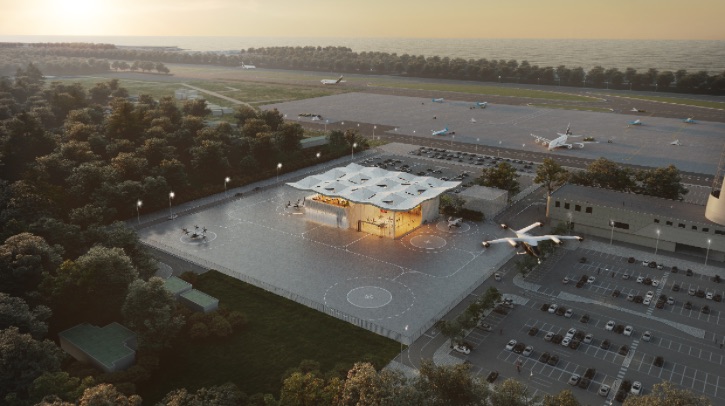 In October 2024, Italian vertiport network operator UrbanV and Korea Airports Corporation (KAC), the operator of 14 Korean airports, signed an agreement to develop vertiport networks and create an AAM ecosystem. The companies will also investigate potential collaborations on future overseas urban air mobility (UAM) vertiport development projects. Min-Chul Jung, head of the innovative air mobility office at Korea Airports Corporation, spoke to Passenger Terminal Today to reveal more about the AAM project and its impact on the future of the airport operator.
In October 2024, Italian vertiport network operator UrbanV and Korea Airports Corporation (KAC), the operator of 14 Korean airports, signed an agreement to develop vertiport networks and create an AAM ecosystem. The companies will also investigate potential collaborations on future overseas urban air mobility (UAM) vertiport development projects. Min-Chul Jung, head of the innovative air mobility office at Korea Airports Corporation, spoke to Passenger Terminal Today to reveal more about the AAM project and its impact on the future of the airport operator.
What are the main objectives of the collaboration between UrbanV and KAC? What can passengers expect from the implementation of this advanced air mobility (AAM) ecosystem?
The two companies possess their own resources and knowledge of airports, which has empowered us (KAC and UrbanV) with leading positions in the national AAM sector. The main goal lies in building AAM infrastructure in the most efficient way to support future mobility by engaging in full-out networking efforts on AAM expertise, technologies and regulations. One of the best things about AAM is they do not need runways, meaning its infrastructure can be placed in any corner of an urban area, thereby facilitating easy access. AAM can be a great substitute for helicopters, offering innovative, enhanced mobility by reaching out to locations inaccessible by ground transportation. Such innovation will benefit tourism, public and medical services as well.
What are the key milestones and timelines for the rollout of vertiport networks and AAM capabilities in South Korea?
The primary focus is on promoting a tourism-based AAM project on Jeju Island, the best-known tourist spot in South Korea. Annually visited by 15m tourists on average, Jeju Island has great potential to drive sufficient demand for AAM services and offers barrier-free environments suitable for flying. The current plan is to build three vertiports – at Jeju International Airport and two famous touristy sites – by the end of 2026. To utilize AAM as a transportation mode in an urban area, public acceptance, airfare cuts lowered by economies of scale and the establishment of safety and technical standards should be achieved.
What new technologies are being deployed for the development of vertiport networks and the AAM ecosystem?
AAM is run by eVTOL aircraft (electric vertical takeoff and landing). As such, vertiports need to set up charging stations aligned with the aircraft type. Korea Airports Corporation plans to build digital twin vertiports using BIM (building information modeling). This facilitates the convergence of eVTOL flight information, passenger data, facility information and all related data, realizing a digital tech-based operating system.
How does this collaboration factor into your organization’s future plans? Are there any plans for further expansions or new initiatives beyond this project, including potential overseas urban air mobility (UAM) vertiport development projects?
Any specific standards or regulations for AAM technology and design have not been established yet. For this reason, KAC and UrbanV are focusing on the most effective approach to the construction and management of vertiports at the current pace. Once AAM has entered into service, the next step is to work on overseas projects, taking advantage of networks that the two players have.
To find out more about the project, click here.

